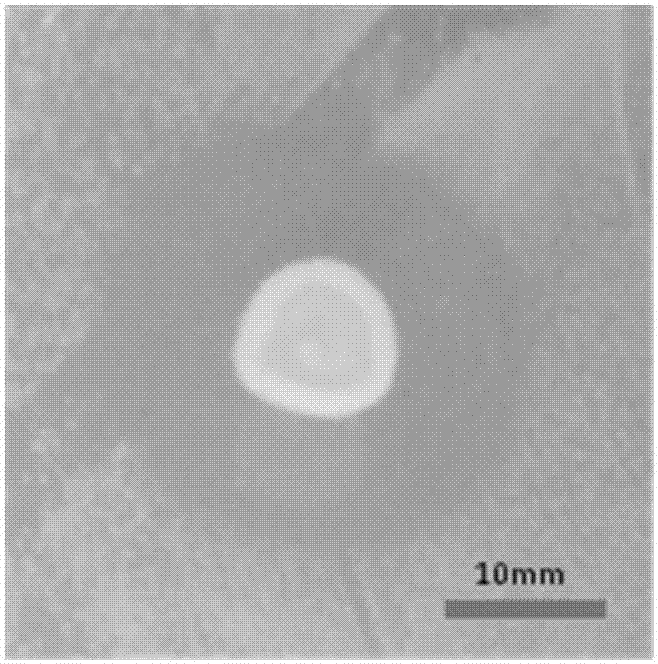Bacillus capable of resisting various aquaculture pathogenic bacteria and application thereof
A technology of pathogenic bacteria and mariculture, applied in the direction of application, bacteria, and microbial-based methods, can solve problems such as drug residues, aggravating animal diseases, and water environment pollution
- Summary
- Abstract
- Description
- Claims
- Application Information
AI Technical Summary
Problems solved by technology
Method used
Image
Examples
Embodiment 1
[0013] Example 1 Isolation, Identification and Preservation of Bacillus amyloliquefaciens InAD-160
[0014] Step 1. Strain separation and purification: The original sample collection place of the bacterial strain InAD-160 obtained in the present invention is the bottom seawater of a station (E88°; S4°) in the Indian Ocean. After the sample is collected, take 1 ml of seawater sample and add sterile glycerol to a final concentration of 20%, immediately store it in a -80°C refrigerator, take it back to the laboratory, take out the sample and thaw and aseptically apply it to MA 2216E medium (Difco, Cat. No. : 212185), put the coated petri dish upside down at 25°C and incubate for 24-96 hours, pick out the single colony that grows, line it on the MA2216E medium plate, and turn the marked petri dish upside down Cultivate at 25°C for 24-96 hours, pick out the single colony that grows, and line it again on the MA 2216E medium plate for purification, place the marked Petri dish upside ...
Embodiment 2
[0028] Example 2. Application of Bacillus amyloliquefaciens InAD-160
[0029] Step 1. Preparation of Bacillus amyloliquefaciens InAD-160 bacterial solution: Streak the strains stored at -80°C on 2216E seawater solid medium, culture at 25°C-30°C, pick a single colony and inoculate it in fresh 2216E seawater The liquid medium was fermented and cultivated at 25-30°C and 120-200rpm for 48 hours to obtain a fermentation broth, and the strain density of the fermentation broth was 1×10 9 / ml.
[0030]Step 2. Preparation of bait: The basic bait used in this experiment is the bait of juvenile fish from Santong Bioengineering (Weifang) Co., Ltd. The bait of the experimental group was prepared according to the standard of mixing 4ml of fermentation broth per 10g of basic bait, and the bait of the control group was mixed with cultured seawater.
[0031] Step 3. Turbot culture: 180 healthy turbots with an average body length of 8.37±1.13cm and an average weight of 9.2±1.99g were temporar...
PUM
 Login to View More
Login to View More Abstract
Description
Claims
Application Information
 Login to View More
Login to View More - R&D
- Intellectual Property
- Life Sciences
- Materials
- Tech Scout
- Unparalleled Data Quality
- Higher Quality Content
- 60% Fewer Hallucinations
Browse by: Latest US Patents, China's latest patents, Technical Efficacy Thesaurus, Application Domain, Technology Topic, Popular Technical Reports.
© 2025 PatSnap. All rights reserved.Legal|Privacy policy|Modern Slavery Act Transparency Statement|Sitemap|About US| Contact US: help@patsnap.com


